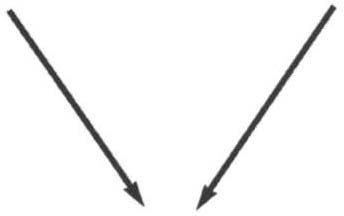i bc27f85be50b71b1 (135 page)
Read i bc27f85be50b71b1 Online
Authors: Unknown


440 ACUTE CARE HANDBOOK FOR PHYSICAL THERAPISTS
Bum Injury
+
Rot .... of Y1ISOaC1MIsubstancea
+
Increased vascular penneabliity
Cell membrane des1ruction
+
Edema IormatIon
EIectroly1e changes
Hematologic changes
RIsk 01 compartment
Decreased IeYefs of K+
Increased Hct
syndrome
Increased levels 01 Na-, cr
(plasma volume loss)
Increased body weight
Increased levels 01 BUN
DecnIased """"'"" of
Low protein confllnt
(protein cataI>ollom)
RBCs (hemolyzed cotls)
Increased numbers 0'
I
wacs (hemoconcentration)
DecnIased numbers of
thrombocytes (platelet
destruction)
+
IJecf8ased ln1mascutar volume
_ blood viscosity
+
IJecf8ased urine output
(hypowlemla)
Myogloblnll1a
(muscle damage)
Increased peripheral resistance
+
IJecf8ased canliac output
+
Ilecreased 0, dotNery to vital orvans and tissues
In the setting of decroased body temperature and Increased heart mt.
Figure 7-3. The physiologic sequelae of major burn injury. (BUN blood
=
urea nitrogen; Ct-
chlorine; Hct hematocrit; K+ potassium; Na·
=
=
=
=
sodium; 0, oxyge/l; RBC red blood cell; IVBC while blood cell.) (Mod
=
=
=
ified from J Maruin. Therma/lnjuries. In VD Caradona. PD Hum, PJ Baslnagel Mason, et al. {eds}, Trauma Nursing from Resuscitation through Rehabilitation [2nd ed]. Philadelphia: Saunders, 1994;740; and RH Demling, C
LaLonde. Bum Trauma. New York: Thieme, 1989;99.)




BURNS AND WOUNDS 441
Table 7·2. Systemic Complications of Burn Injury
Body System
Complications
Respiratory
Inhalation injury, restrictive pulmonary pattern
(which may OCCur with a burn on the trunk),
atelectasis, pneumonia, microthrombi, and adult
respiratory distress syndrome
Cardiovascular
Hypovolemiaihypotension, pulmonary hypertension,
subendocardial ischemia, anemia, and disseminated
intravascular coagulopathy
GastroinrestinaV
Stress ulceration, hemorrhage, ileus, ischemic co\iris,
genitourinary
cholesrasis, liver failure, and urinary rract infection
Renal
Edema, hemorrhage, acute tubular necrosis, acure
renal failure
Source: Data from HA Linares. The Burn Problem: A Parhologist's Perspective. In DN
Herdon (ed), Total Burn Care. London: Saunders, 1996.
summary of the most common complications of burns is listed In
Table 7-2.
Types of 8ums
Thermal Burns
Thermal burns can be the result of conduction or convection, as in
contact with a hot object, hot liquid, chemicals, flame, or steam. In
order of frequency, the most common 'Ypes of thermal burns are
scalds, flame burns, flash burns, and cOntact burns (Table 7-3)4 The
severity of burn depends on the location of the burn, the temperature
of the burn source, and the duration of contact.s
Electrical Burns
An electrical burn is caused by exposure to a low- or high-voltage
current and results in superficial burns, as well as less-visible but
massive damage of muscle, nerves, and bone. Tissue necrosis of
these deeper structures occurs from the high heat intensity of the
current and the electrical disruption of cell membranes.' Tissue
damage occurs along the path of the current, with smaller distal
areas of the body damaged most severely. This pattern of tissue





442 AClITE CARE HANDBOOK FOR PHYSICAL n IERAPISTS
Table 7-3. Thermal Burns: Types and Characteristics
Burn Type
Description
Characterisrics
Scald burn
Spill of or immer
Often causes deep partial- or fullsion in a hot